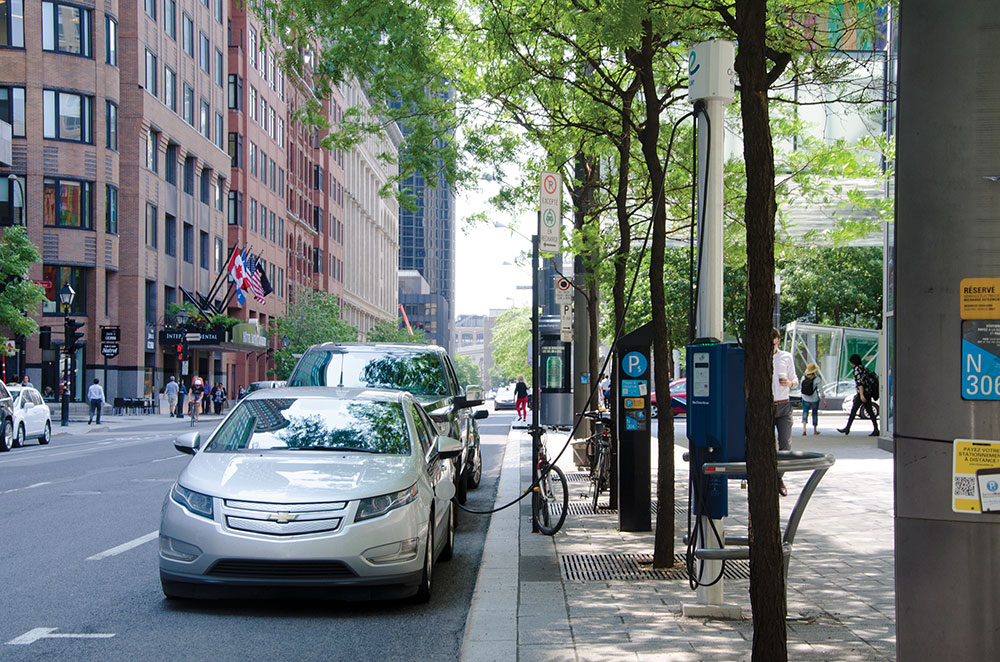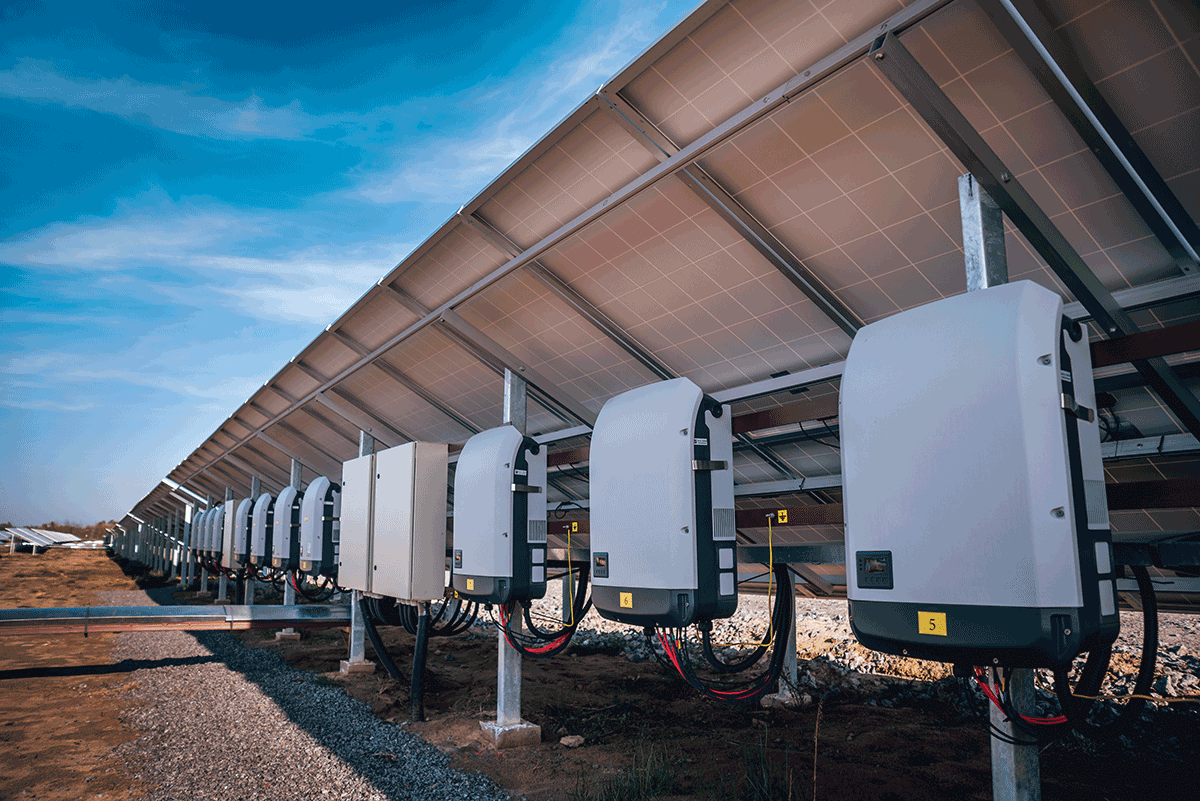The transportation system of tomorrow will be substantially different from the system that most Canadians are familiar with today.
by Brent Hartman, Director of Fuel & Transportation Standards – CSA Group
Imagine it is 2035. You need to get on the highway for a business trip. Do you drive by clusters of gas stations on your way to the highway? Are your hands on the steering wheel as your vehicle maneuvers through the community or along the highway? You pass a tractor-trailer. Do you smell or see any exhaust? Is there a driver on board? You arrive at the parking lot of your destination. How many vehicle chargers are there? Are you plugging one into your vehicle? As you walk to the building entrance, a bus stops on the road. Is the engine rumbling? Does the bus have a driver?
The movement of people and goods will change dramatically in the coming decade as the transportation sector undergoes a rapid transformation through electrification, connectivity and automation. Electrification refers to the use of batteries and fuel cells in place of internal combustion engines powered by fossil fuels; connectivity refers to various types of wireless technologies used to communicate with vehicle surroundings, such as occupants, other vehicles, transportation infrastructure, or internet-based applications; and automation refers to supplementing or replacing human driving through a combination of sensors, controllers, and onboard computers, along with sophisticated software to allow the vehicle to control driving functions.
Where is Canada Now with Electrification?
While Canada is making good progress in addressing these trends, it must find ways to further accelerate activities to successfully transition to a new transportation system.
Transitioning to vehicle electrification is one area where Canada has a clear focus and is displaying global leadership. The federal government has mandated a new vehicle sales target of 100% zero-emission vehicles by 2035. To support these vehicles, public and private investments in charging networks across Canada have been rapidly increasing. The Canadian government alone has pledged over $1 billion to increase battery electric vehicle (EV) charging and EV affordability. While there has been great progress in expanding charging networks, some studies suggest the need for $20 billion over the coming decades to develop the public charging infrastructure necessary for EV deployment.
For connectivity and automation, vehicle testing and demonstrations are happening across Canada, but some of the building blocks for these technologies are already integrated into new vehicles today through innovations like adaptive cruise control and lane assist technology. Transport Canada has programs, such as the Program to Advance Connectivity and Automation in the Transportation Systems (ACATS), to begin preparing the transportation system. However, at this point, connected and automated vehicle (CAV) targets and objectives are not as clearly defined by the government, as they are for electrification.
A Rapid Shift to Electrification
It is not necessarily reasonable to compare EV and CAV deployment and objectives. While both are critical for the evolving transportation network, the technologies pose different challenges and are at different phases of development and technology readiness.
For EVs, the technology is widely deployed and available to most consumers. Virtually everyone has seen an electric vehicle in operation on public roadways and has seen public charging equipment in communities or at work. While EV technology is different than vehicle technology for gas- and diesel-powered vehicles, the safety framework for EVs and charging equipment is firmly in place. As a result, consumers do not see safety as a barrier to adopting the technology even though it is different from the vehicles being replaced by EVs.
With such wide acceptance and availability of EVs, the focus of the EV industry has shifted to the customer experience to increase market share. With vehicles available and production increasing, EV stakeholders are focused on increasing charging infrastructure to support the vehicles and working to ensure the availability, reliability, interoperability, and accessibility of the infrastructure.
In addition to the customer experience, widespread EV deployment requires giving thought to the EV ecosystem at-large, to understand the impacts and challenges that may arise from millions of electrified vehicles increasing electrical demand when charging overnight. Some believe EVs will create an energy demand problem. However, with a comprehensive view of the electrical system, EVs can be part of an energy management solution through various technologies such as the ability to store power at charging locations, utilizing equipment with chargers or within buildings that manage energy usage, and allowing vehicle batteries to provide energy to homes, the electrical grid, or other vehicles.
The Emergence of Connectivity and Automation
Connected and automated vehicles are at a different phase in deployment. While there are demonstrations across Canada, the technologies continue to mature, which will lead to a continued increase in expanded demonstrations and broader deployments. A safety framework is also emerging due in large part to Transport Canada’s support.
However, the regulatory framework for CAV deployment is complex, requiring all levels of government (federal, provincial, and municipal) to coordinate their areas of responsibility. Adding complexity, there are various standards organizations involved in developing requirements for CAV technologies. Like EVs, this is a problem that requires a systems-based approach and an understanding of how different elements are integrated into the whole. This complex landscape will need to be successfully managed to build trust with consumers and the public. Without that trust, CAV technology will struggle to gain market acceptance.
Collaboration is Key to Electrification
Canada is well-positioned to lead in electrification, connectivity, and automation, but collaboration will be critical. It will be important to tackle the deployment challenges facing EVs and CAVs holistically rather than solely in discrete segments. Both technologies require collaboration between industry sectors that have not had to collaborate or coordinate in the past.
For example, electric utilities are playing a major role in electrifying transportation, while automation requires vehicle manufacturers to collaborate with the public infrastructure sector and technology companies. As the lines blur between the automotive sector and other sectors like electrical utilities and transportation infrastructure, these technologies have increasingly complex regulatory requirements since all three levels of government (federal, provincial, and municipal) have regulatory roles and involvement.
Stakeholders across these ecosystems will need to address these issues collectively by sharing information and challenges. Solutions can then be developed by experts from various sectors. To efficiently address the challenges and develop solutions, stakeholders need an appropriate forum to encourage dialogue. Identifying solutions to these challenges will be critical in forming the basis for safety, performance, efficiency, and sustainability. Addressing each of these factors will increase public confidence in emerging technologies. Standards can play a key role in bridging collaborative challenges by setting requirements for safety, performance, efficiency, and sustainability.
Improving Customer Experience with Electrification
For vehicle electrification, Canada needs to execute its planned EV approach of increasing the supply of vehicles and continually encouraging EV demand by improving the consumer experience. The key aspects of consumer experience for charging infrastructure are availability, reliability, interoperability, and accessibility. Each of these aspects must be addressed to maximize the customer experience.
- The Availability of Charging Infrastructure
Availability means having charging infrastructure that is strategically and widely distributed to support customers, whether at home, in public, or at work. The infrastructure must also be equitably distributed so that all Canadians have the opportunity to transition to electrified transportation.
- Reliable Equipment
Once charging is available, the equipment must also be reliable, meaning that the equipment is operational when needed. Hardware and software issues at EV charging stations can impact EV owners. Increasing EV charger uptime is important, particularly when the government is providing significant investment in the equipment.
- Payment Interoperability
The lack of payment interoperability can also create inconvenience and unnecessary costs for EV drivers. Government and other funders can choose to invest in charging infrastructure that includes credit card payment systems, and this can help improve the customer experience with a simple, standardized interface to ease the process.
- Accessibility to Infrastructure
Finally, accessibility is important and should be considered in the broadest sense. On a basic level, charging operators need to consider eliminating physical barriers around the chargers. They need to factor in the weight and maneuverability of cables, as well as having accessible screens and payment options at charging stations. Moreover, EV charging should be in well-lit areas with clear signage. The more people see inviting, safe, and convenient charging options, the more comfortable they will be with EV ownership.
Develop Strategies to Integrate Connectivity and Automation Technologies
For connectivity and automation, CAV technologies are at a critical stage that will require clear government strategies to advance technology development, demonstrations, and a regulatory framework to support widescale deployment. Governments at all levels should develop strategies to incorporate connected and automated vehicles into transportation systems. To the greatest extent possible, the strategies should be complementary. Therefore, launching a national CAV strategy would be an excellent place to start, allowing other jurisdictions to build on a Canada-wide strategic framework.
The regulatory framework for CAVs will also be important and should be considered as part of any national strategy. With a complicated regulatory framework and complex standardization landscape, CAVs lack a consensus-based framework of relevant safety standards to provide a consistent set of requirements that promote public safety, security, interoperability, and industry growth. In particular, transportation infrastructure must be ready for CAV deployment, both the physical and the digital infrastructure.
Physical infrastructure relates to the roadway infrastructure upon which the transportation system operates – tangible objects that provide essential services to road users. For example, roadway markings, traffic signals, signage, bridges, and work zones can be standardized to support CAV deployment.
Digital infrastructure is focused on how equipment stores and exchanges data to support intelligent transportation services. Any infrastructure component that sends or receives data to or from another component or road user is considered digital infrastructure. For example, roadway sensors, communication protocol, high-definition mapping, and GPSs are critical digital infrastructure for CAV deployment. Related to digital infrastructure are cyber security, data management, and privacy, which also need to be addressed by the CAV industry. With proper preparation, CAVs can be deployed safely, securely, and efficiently.
Transportation will be Automated, Connected, and Electrified
The transportation system of tomorrow will be substantially different from the system that most Canadians are familiar with today. The vehicles will not be powered by gasoline and diesel and will be constantly communicating with other vehicles, the roadway, and roadside infrastructure. Additionally, various driving functions will become increasingly automated. Canada has been successfully preparing for this evolution, but there are opportunities to increase preparedness and encourage a more rapid transition.
Brent Hartman is the Director of Fuels & Transportation Standards for CSA Group. Brent leads standards development activities, both operationally and strategically, for the fuels and transportation sectors, covering Canada and the United States. Brent also supports research initiatives that investigate challenges and gaps related to standards development for emerging technologies.













Find Us on Socials